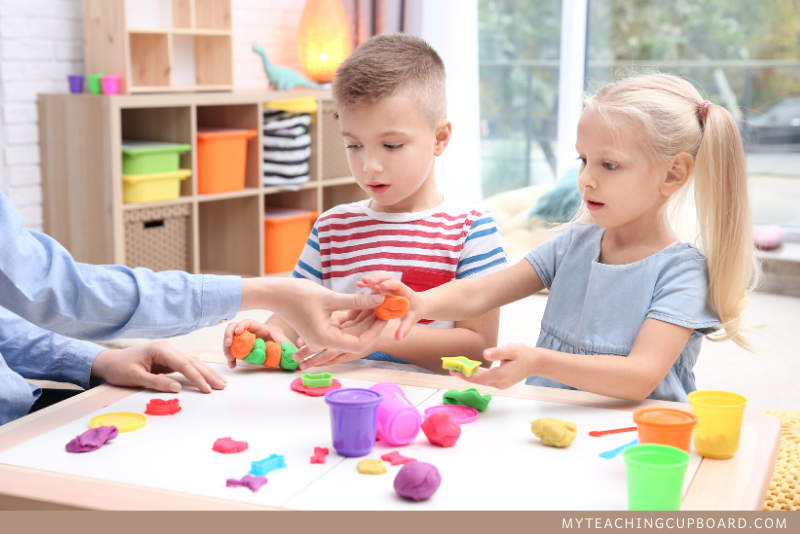Introduction
Few stages of development are as transformative as the years between two and five. Language blossoms, motor skills sharpen, and social curiosity skyrockets. Placing a child in Pre School during this critical window channels natural energy into structured exploration, constructing the cognitive and emotional foundations that will support every future academic leap.
The Importance of Early Childhood Education
Rapid Brain Development
Neuroscientists estimate that more than eighty percent of human brain architecture is formed before age five. High-quality pre-school programs leverage this unprecedented plasticity with targeted activities—story circles, counting games, sensory art—that reinforce neural pathways for language, numeracy, and self-regulation.
Social and Emotional Growth
Home environments rarely replicate the group dynamics children encounter in a classroom. Daily peer interaction teaches sharing, empathy, and conflict resolution, all under the guidance of educators who model respectful dialogue and emotional naming (“I feel frustrated because…”). Mastering these soft skills early prevents behavioral hurdles once formal schooling begins.
School Readiness
By the time children arrive in kindergarten, those who attended pre school usually recognize letters, understand one-to-one correspondence in counting, and can follow multi-step instructions. Instead of grappling with unfamiliar routines, they enter primary grades eager and confident—seizing new concepts rather than catching up.
Key Components of an Effective Pre-School Program
- Play-Based Learning
Guided play transforms curiosity into discovery. A child sorting colored beads is quietly absorbing classification, pattern recognition, and fine-motor control—all while believing they are “just playing.” - Language-Rich Environment
Classrooms brimming with labeled objects, puppet theaters, and daily read-aloud sessions immerse children in vocabulary. Teachers narrate routines, encouraging children to articulate thoughts and questions. - Multi-Sensory Curriculum
Young brains learn best when multiple senses engage simultaneously. Mixing paint, tracing letters in sand, or listening for bird calls in an outdoor garden anchors abstract ideas in tangible experiences. - Balanced Routines
Predictable schedules (morning circle, free choice centers, snack, outdoor exploration) offer security, while flexible blocks allow teachers to extend an activity when curiosity peaks. - Family Partnership
Regular progress reports, photo journals, and parent workshops make caregivers collaborators rather than spectators. Reinforcing classroom themes at home strengthens learning loops.
Benefits for Children and Families
Confidence and Independence
Simple daily tasks—hanging backpacks, choosing activity stations, tidying play areas—instill a sense of autonomy. Repeated success in these micro-responsibilities grows an “I can do it” mindset that permeates academics and beyond.
Physical Development
Obstacle courses, yoga storytelling, and free outdoor play enhance balance, coordination, and core strength. Equally important, joyful movement nurtures a lifelong affinity for physical activity.
Creative Expression
From finger-painting to improvised puppet shows, pre-schoolers experiment freely, learning that ideas can take visible, valuable form. This sense of creative agency fuels divergent thinking—the ability to generate multiple solutions to a single problem—highly prized in modern workplaces.
Cultural Awareness
Many contemporary programs welcome multicultural cohorts, weaving songs, foods, and celebrations from various heritages into the curriculum. Experiencing diversity as normal and wonderful reduces bias and fosters global citizenship from the earliest years.
Choosing the Right Pre-School
Educational Philosophy
Montessori, Reggio Emilia, Waldorf, inquiry-based—each framework balances guidance and freedom differently. Tour classrooms, observe lessons, and note how your child responds to the atmosphere.
Teacher Credentials and Ratios
Certified early-childhood educators understand developmental milestones and individualized instruction. Look for ratios no higher than one adult to eight students, ensuring attentive guidance.
Safe, Stimulating Space
Furniture should be child-sized, materials reachable, and learning zones clearly defined (reading nook, sensory table, construction corner). Outdoor areas need both imaginative play structures and natural elements like gardens or sand pits.
Transparent Policies
Ask about toilet training requirements, allergy protocols, sick-child guidelines, and emergency preparedness. Clarity and consistency in these areas reflect overall program quality.
Preparing Your Child for Success
- Build Excitement– Read books featuring cheerful classroom adventures; frame school as a place of discovery rather than separation.
- Practice Routines– Establish predictable bedtimes and morning rituals at least two weeks in advance to reduce first-day stress.
- Visit Together– A short stay-and-play session lets your child explore while you remain nearby, easing anxiety about the new environment.
- Label Belongings– Turn labeling lunchboxes and sweaters into a creative sticker project, giving children ownership of their supplies.
- Create a Goodbye Ritual– A special handshake or phrase provides reassurance and signals that you will return as promised.
Common Questions Answered
Is structured learning too much at this age?
Quality programs deliver academics through play. Letter sounds appear in songs and puppet skits; counting happens during block tower challenges—never through rote worksheets.
What if my child is shy?
Small group activities and patient educators help introverted children warm up gradually. Peer encouragement often sparks participation faster than parental prompting.
How can I assess progress?
Ask for regular portfolio reviews containing artwork, photo documentation of activities, and anecdotal records highlighting milestones in language, math, and social interaction.
Conclusion
Pre school is far more than child-minding. It is a thoughtfully curated environment where imagination meets intentional teaching, producing confident, compassionate, and capable young learners. By selecting a program aligned with your family’s values and your child’s temperament, you invest in neural networks, social skillsets, and intellectual curiosity that will power success long after the first tiny backpack is outgrown.

















